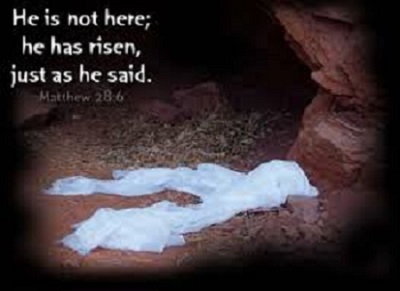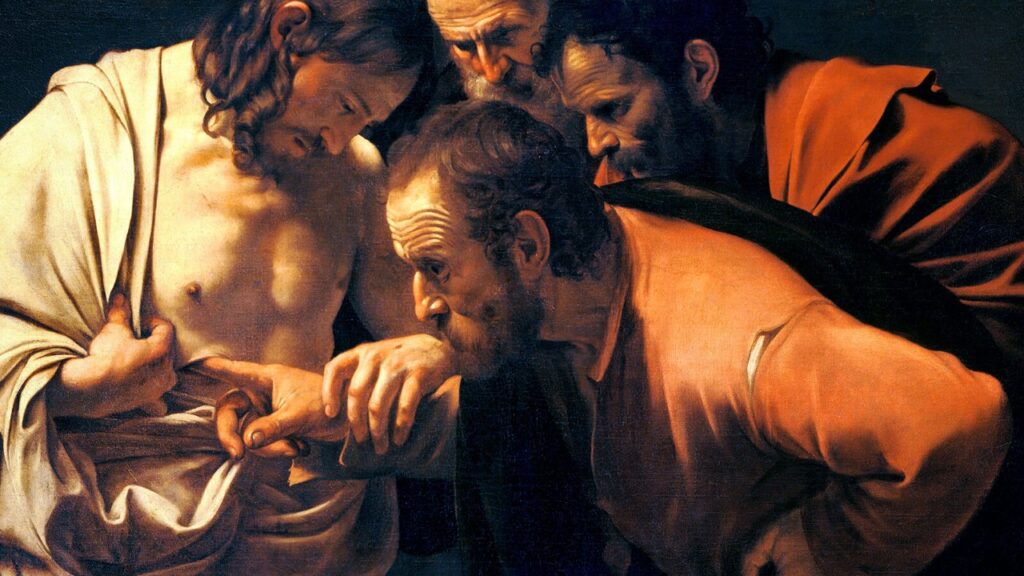Watch Tower Jesus pre-Incarnation-the Archangel
The Watch Tower Jesus presents so any problems for the serious Bible student, and Jehovah’s Witnesses need to understand this. The Watch Tower Society teaches that before his incarnation, and after his resurrection to glory, Jesus is Michael the archangel.
‘Michael, referred to by some religions as “Saint Michael,” is evidently a name given to Jesus before and after his life on earth. Michael disputed with Satan after the death of Moses and helped an angel deliver God’s message to the prophet Daniel. (Daniel 10:13, 21; Jude 9) Michael lives up to the meaning of his name,—“Who Is Like God?”—by defending God’s rulership and fighting God’s enemies.—Daniel 12:1; Revelation 12:7.’ – jw.org website
However, this was not always their teaching:
‘…it is said (of Jesus), ‘Let all the angels of God worship him;’ (that must include Michael, the chief angel, hence Michael is not the Son of God) and the reason is, because he has ‘by inheritance obtained a more excellent Name than they.’’ – The Watchtower, Nov.1879, p.4
Watch Tower v Bible Teaching
1 Thessalonians 4:16 – Since Jesus comes ‘with the voice of an archangel’ he must be an archangel. This verse doesn’t say Jesus is an angel. It also says he comes with the trumpet of God. Following Watch Tower logic, this must mean Jesus is God. The verse is explained in Matthew’s gospel:
‘For the Son of Man is coming with his angels in the glory of God his Father…’ Mt.16:27
‘When the Son of Man comes in his glory, and all the angels with him, then he will sit on his glorious throne.’ Mt.25:31
In Matthew 24:29-31 we have an account of ‘the sign of the Son of Man.’ Verse 31 reads:
‘And he (the Son of Man) will send out his angels with a loud trumpet call…’
It is Jesus who sends out his angels with a loud trumpet call. It is the trumpet call of angels sent out by Jesus when his sign appears in the heavens.
Jude 9 – Strangely, they present this text as evidence of Jesus’ angelic nature although it doesn’t mention Jesus. Michael here rebukes the devil in the name of the Lord. Contrast this with the way Jesus rebuked Satan (Mk.8:33; Mt.16:23)
Revelation 12:7-10 – Michael here establishes the kingdom of God, but remember, he acts under Christ’s authority (Mt.24:31). This text doesn’t say Jesus is Michael, but Michael and his angels conquer ‘by the authority of Christ…by the blood of the lamb.’ (Rev.12:10,11)
Daniel 12:1,2; John 5:25-29 – Michael, in Daniel 12, is depicted as ‘the great prince who has charge of [God’s] people,’ who will arise and God’s people will be delivered in a time of trouble. In John 5 we read how the dead will hear the voice of the Son of God at the time of the resurrection. From Daniel 10:21 Michael is described to Daniel as ‘your prince,’ the archangel with special responsibility for the nation of Israel. There is no link here, but a description of the respective roles of the archangel and of the Son of God at that time.
Daniel 10:13 – This is a key text and works against Watch Tower teaching. Michael is here described as ‘one of the chief princes.’ Clearly, there were others of equal status – equal to Jesus? Michael is depicted as one of a cohort of equal status angels, and a ‘guardian angel’ of the Israelites.
Daniel 8:25– This verse refers to God himself and speaks of the destruction of Antiochus Epiphanes, who declared himself the manifestation of God. Verse 11 depicts Epiphanes robbing God of glory. Some think the ‘Prince of princes’ here refers to Jesus, but even if it does ‘Prince of princes’ isn’t the same as ‘one of the chief princes’ in 10:23. Jesus cannot be Michael.
…but to the Son
Hebrews 1:7,8 – these are key verses because they put Jesus in a completely different and separate category than angels.
In v.7 Jehovah speaks to the angels, which are all together in one group, which would include Michael, one of the chief angels, but still an angel.
The ‘but’ at the beginning of verse 8 indicates that Jehovah goes on to speak to someone very different, ‘the Son.’ What does Jehovah say?
‘Of the angels he says, He makes his angels winds, and his ministers a flame of fire. But of the Son he says, ‘Your throne, O God, is forever and ever, the sceptre of uprightness is the sceptre of your kingdom.’
The splendour of angels is magnificent, such that people fall down in fear in their presence, but that splendour is derived from the One who is all the more glorious, the Son, whom God commands even glorious angels to worship:
‘And again, when he brings his firstborn into the world, he says, ‘Let all God’s angels worship him.’ v.6
Watch Tower Jesus – Resurrection

The Watch Tower Society teaches that when Jesus died he went out of existence. It required Jehovah God to raise him because he was only in God’s memory:
‘Resurrection involves a reactivating of the life pattern of the individual, which life pattern God has retained in his memory.’ Reasoning from the Scriptures, 1985, p.333
They also say Jesus was resurrected as a spirit, having no physical body. He simply materialised bodies to suit the occasion:
‘It is true that Jesus appeared in physical form to his disciples after his resurrection. But on certain occasions, why did they not at first recognise him?…Jesus evidently materialised bodies on these occasions, as angels had done in the past when appearing to humans. Disposing of Jesus’ physical body at the time of his resurrection presented no problem for God. Interestingly, although the physical body was not left by God in the tomb (evidently to strengthen the conviction of the disciples that Jesus had actually been raised), the linen cloths in which it had been wrapped were left there; yet, the resurrected Jesus always appeared fully clothed.’ Reasoning from the Scriptures, 1985, pp 217/8
Commenting on Luke 24:36-39, a key resurrection text, they write:
‘Humans cannot see spirit, so the disciples evidently thought they were seeing an apparition or a vision…Jesus assured them that he was no apparition; they could see his body of flesh and could touch him, feeling the bones; he also ate in their presence…Following his resurrection, Jesus did not always appear in the same body of flesh (perhaps to reinforce n their minds the fact that he was a spirit), and so he was not immediately recognisable even by his close associates. (John 20:14,15; 21:4-7) However, by his repeatedly appearing to them in materialised bodies…he strengthened their faith in the fact that he truly had been resurrected from the dead.’ Reasoning from the Scriptures, 1985, pp 334/335
Well, Yes…Evidently
This has to be one of the most confusing things I have ever read, and I used to be a Mormon. We will come to ‘proof-texts’ presently, but let’s see if we can unpack this jumble of guesses, surmises, and wild leaps of conjecture. I do wonder if they understand what ‘evidently’ means. They offer no evidence as such, using the word as a synonym for ‘supposedly’ or ‘it seems so.’ There is a lot of guesswork going on here.
Where does Scripture say our life pattern is retained in God’s memory? Having decided what they believe, i.e. when you’re dead you’re dead, they make up phrases and ideas not found in Scripture to explain the resurrection of something that no longer exists.
Jesus is resurrected a spirit, which presents a problem. How does Jesus convince the disciples he is the resurrected Christ? ‘Evidently’ he ‘materialises a body’ to fit the moment. ‘See my hands and my feet,’ he says to them, ‘that it is I myself. Touch me, and see. For a spirit does not have flesh and bones as you see that I have.” Luke 24:39
The evidence of his resurrection is his physicality, but this is manufactured evidence, he is not a physical being but a spirit – evidently. This then creates another problem; he wants them to know he is a spirit, but he has just presented his physical body as evidence to the contrary. So, what will he do?
‘Following his resurrection, Jesus did not always appear in the same body of flesh (perhaps to reinforce n their minds the fact that he was a spirit), and so he was not immediately recognisable even by his close associates.’
He appeared many times to his followers and I have this picture in my mind of yet another ‘stranger’ turning up, the disciples wondering who this might be, and one of them saying, ‘Oh, I think it’s Jesus again. I wish he wouldn’t keep doing that, we’re nervous enough about the Romans and the temple authorities without him turning up, a stranger in our midst, time and again.’
What About his Dead Body?
‘Disposing of Jesus’ physical body at the time of his resurrection presented no problem for God. (I am sure it wouldn’t have) Interestingly, although the physical body was not left by God in the tomb (evidently to strengthen the conviction of the disciples that Jesus had actually been raised) the linen cloths in which it had been wrapped were left there; yet, the resurrected Jesus always appeared fully clothed.’
Not only a new identity each time but a change of wardrobe! But Jesus was not buried in his day clothes, he was buried wrapped in linen with spices brought by Nicodemus (John 19:39-40). Are they imagining a modern funeral, with the corpse dressed in his Sunday best? The winding sheets of his burial and the clothes they subsequently saw him wearing have nothing to do with each other.
Finally, we are told, ‘the physical body was not left by God in the tomb (evidently to strengthen the conviction of the disciples that Jesus had actually been raised)’ So…the absence of a body in the tomb is evidence Jesus is risen – ‘evidently’ physically resurrected.
The evidence of ‘a body of flesh and bones’ reinforces this conviction, along with Jesus’ words, ‘a spirit does not have flesh and bones as you see me have.’ Luke 24:39
The appearances of Jesus in different guises, however, are meant, in some obscure way, to convey the idea he is not physically resurrected. The disciples, nevertheless, are supposed to glean from this contradictory evidence that Jesus is a spirit, that they were right all along in that upper room, and Jesus hoodwinked them.
Watch Tower Jesus – The Resurrected Christ
The central biblical teaching is that of Christ’s resurrection. Paul described it as ‘of first importance.’
‘I delivered to you as of first importance what I also received: that Christ died for our sins in accordance with the Scriptures, that he was buried, that he was raised on the third day in accordance with the Scriptures…’ 1 Cor.15:3,4
Peter, at Pentecost, preached a resurrected Christ:
‘Jesus of Nazareth, a man attested to you by God with mighty works and wonders and signs…God raised him up, loosing the pangs of death…’ Acts 2:22-24
Bootstrap Jesus
The Watch Tower Society teaches that when Jesus died he went out of existence. It required Jehovah God to raise him because he was only in God’s memory:
‘Resurrection involves a reactivating of the life pattern of the individual, which life pattern God has retained in his memory.’ Reasoning from the Scriptures, 1985, p.333
We learn from Peter’s sermon that God raised Jesus, remembering and recreating him, but Jesus also said that he would raise himself:
‘Destroy this temple, and in three days I will raise it up. The Jews then said,’It has taken forty-six years to build this temple, and will you raise it up in three days?’ But he was speaking about the temple of his body. When therefore he was raised from the dead, his disciples remembered that he had aid this, and they believed the Scripture and the word that Jesus had spoken.’ John 2:18-20
How could a non-existent Jesus raise himself up? By his own non-existent bootstraps? God can create ex-nihilo, from nothing, but can something that doesn’t exist bring itself into existence?
A Physical Resurrection

Jehovah’s Witnesses insist God ‘disposed of Jesus body,’ leaving an empty tomb as evidence of a resurrection. He didn’t need a body since, as they argue from 1 Cor.15, Jesus was raised a spirit:
‘So is it with the resurrection of the dead. What is sown is perishable; what is raised is imperishable. It is sown in dishonour, it is raised in glory. It is sown in weakness; it is raised in power. It is sown a natural body; it is raised a spiritual body. The it is written, ‘The first man Adam became a loving being, the last Adam became a life-giving spirit.’’ 1 Cor.15:42-45
They face so many problems here:
This passage is about ‘the resurrection of the dead,’ and not specifically the resurrection of the Christ. It answers the question, ’How are the dead raised?’ (v.35) Paul makes clear his meaning when he writes to the Philippian saints:
‘…our citizenship is in heaven, and from it we await a Saviour, the Lord Jesus Christ, who will transform our lowly bodies to be like his glorious body…’ Phil.3:20,21
Our lowly bodies will be like his glorious body. This destroys the Watch Tower teaching of two grades of kingdom citizenship, those with physical bodies on earth, and those with spirit bodies in heaven. John writes:
‘Beloved, we are God’s children now and what we will be has not yet appeared; but we know that when he appears we shall be like him, because we shall see him as he is.’ 1 John3:2
We have already read from the gospel account of John that the disciples understood Jesus to be prophesying his bodily resurrection. Witnesses believe the resurrected Christ was a spirit being who materialised bodies to fit the occasion, but he was speaking about the temple of his body.
It Was Always Jesus – in the Flesh
They insist the disciples sometimes didn’t recognise Jesus because he appeared in different bodies:
‘Following his resurrection, Jesus did not always appear in the same body of flesh (perhaps to reinforce in their minds the fact that he was a spirit), and so he was not immediately recognisable even by his close associates. (John 20:14,15; 21:4-7)’ Reasoning from the Scriptures, 1985, pp 334/335
John 20:14,15 recounts the early morning incident of Mary at the tomb mistaking the risen Christ for the gardener. It seems infinitely more reasonable to understand her failure to recognise Jesus to the light at that time of day, ‘while it was still dark’ (v1), her distraught state, and the fact Jesus would be the last person she would expect to see outside his own tomb.
John 21:4-7 recounts another early morning encounter between fishermen out on the lake, Jesus on the beach, and again an early morning encounter, ‘just as day was breaking.’ v.4 These are not unreasonable explanations, and they make a great deal more sense than Jesus lying to the disciples about not being a spirit in Luke 24:36-43.
The resurrection is fundamental to our faith, without it we have no hope. Paul wrote:
‘If the dead are not raised, not even Christ has been raised. And if Christ has not been raised, your faith is futile and you are still in your sins…if in Christ we have hope in this life only, we are of all people most to be pitied.’ 1 Cor.15:16-19
He also said it is on our confession of the resurrection and Lordship of Jesus that our salvation depends:
‘If you confess with your mouth Jesus is Lord, and believe in your heart God raised him from the dead, you will be saved…’ Romans 10:9
It is imperative that we have the right Lord and the right resurrection. As Matthew wrote;
‘Do not be afraid, for I know that you seek Jesus who was crucified. He is not here, for he has risen, as he said.’ Mt.28:5,6

